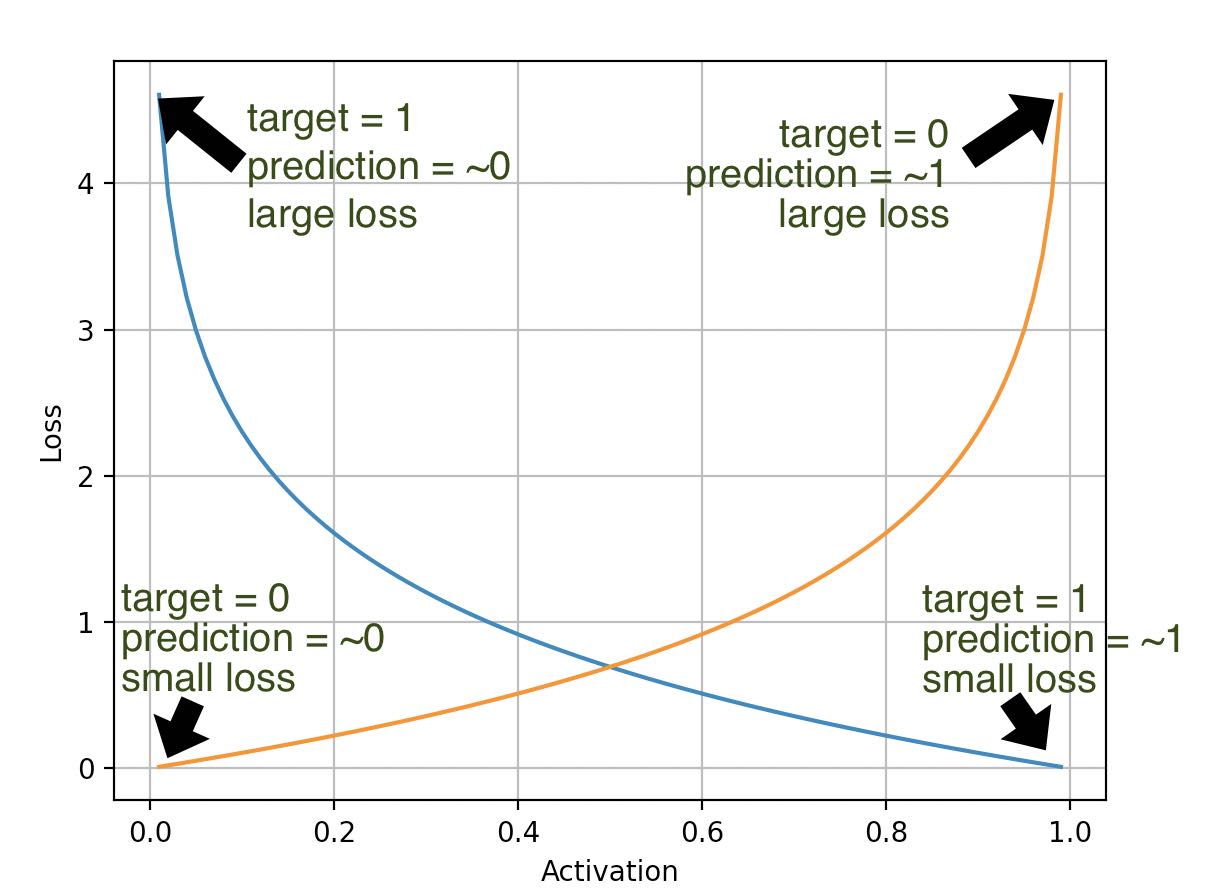

This code shows how to calculate the loss of a single training sample when the last layer in your neural network apllies a sigmoid function to create a binary classification.
If you are here just for the code, grab this and strip the comments:
def log_loss(act, target):
""" target == 0 -> -math.log(1 - act)
target == 1 -> -math.log(act) """
return -target * math.log(act) - (1 - target) * math.log(1 - act)
The goal of the logistic loss function is:
This is what that behavior looks like:

If you want a full example that shows the graphic, take this code:
import math
import matplotlib.pyplot as plt
def log_loss(act, target):
""" target == 0 -> -math.log(1 - act)
target == 1 -> -math.log(act) """
return -target * math.log(act) - (1 - target) * math.log(1 - act)
fig, ax = plt.subplots()
predictions = [r / 100 for r in range(1, 100)] # -> [.01, 0.02 ... 0.99]
losses_for_target_one = [log_loss(p, 1) for p in predictions]
losses_for_target_zero = [log_loss(p, 0) for p in predictions]
ax.plot(predictions, losses_for_target_one)
ax.plot(predictions, losses_for_target_zero)
ax.set_xlabel("Activation")
ax.set_ylabel("Loss")
plt.grid(True)
plt.show()